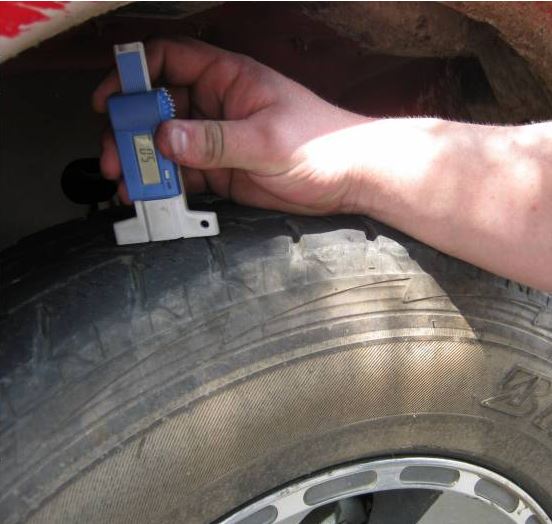
Bridgestone’s Tyre Check programme moved into its seventh year with the first event of 2013 being held in the car park of Pick n Pay’s Primrose branch in Germiston. The February survey sampled 1212 tyres on 303 vehicles as part of the long-running programme to benchmark tyre condition in South Africa.
An immediate red flag was raised when Bridgestone staff discovered that fully 20% of the vehicles surveyed had mis-matched tyres. Some cars had four different brands of tyre fitted, a different brand in each wheel position. “When a vehicle has different types of tyres on the same axle, it may pull to one side under braking,” said Bridgestone PR Manager, Mandy Lovell. “When all four tyres are different, the vehicle will not respond consistently and its natural roadholding balance may be affected,” she added. “We’ve kept an eye on this issue and rate of mis-matched tyres noted in the surveys conducted in 2012 was between 1% and 5%.”
She added that the previous survey that was conducted in Germiston, in 2011, had an even higher mis-match rate, 31%. “As high as the current mis-match rate is, we’re pleased that it’s come down by one-third in the last two years,” she commented.
In other aspects of the survey, the tyre condition and inflation pressures were fairly consistent with average results over the past two years. 88% of tyres were found to be correctly inflated (2011 Germiston survey: 87%). This was the result of the percentage of tyres in the ‘dangerous’ inflation category (between 150kPa and 170 kPa) dropping from the 5% noted in Germiston in 2011 to 4% in 2013.
In the ‘extremely dangerous’ category (less than 150 kPa or above 290 kPa) , the percentage was 8%, unchanged from Germiston’s 2011 figure. The percentage of tyres which were excessively worn and required replacement also held steady at 6%
Another significant finding was that numerous tyres were over-age and required replacement. Once a tyre ages beyond about five years after manufacture, it starts to lose its flexibility. This not only reduces its traction but can lead to cracking. In extreme cases of very old tyres, the tyre may fail suddenly if the structure is excessively weakened by cracks.
“Tyre condition in Germiston appears to have remained fairly stable over the past two years,” said Lovell, “The decline in the mis-match rate is pleasing, and so is the small reduction in the number of tyres in the ‘extremely dangerous’ category,” she added. “We’re worried about the number of older tyres though.”
She advised motorists to take their vehicles to a tyre dealer if their tyres were older than five years or so, to ensure that they were not starting to show signs of age-related deterioration. “Tyres, like other rubber products, have a limited service life, and just because they still have tread left doesn’t mean they’re safe to use. Rather have them checked, just for peace of mind,” she concluded.
Also view: